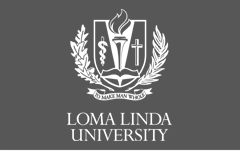Abstract
INTRODUCTION AND OBJECTIVES: Interval colorectal cancer (ICC) is defined as any colorectal cancer presenting prior to the recommended surveillance interval (~3-5 years), three months following a colonoscopy. Numerous studies have suggested discrepancies among Veterans within the Veteran Affairs (VA) network versus non-VA facilities. Here we seek to explore these discrepancies further by investigating the rates of ICC using a non-VA private endoscopist group.
METHODS: A total of 13,442 patients were randomly selected utilizing the Loma Linda VA Hospital (LLVAH) database for up to 5 years. Retrospective analysis compared patients referred to a non-VA endoscopy group to patients who remained within the LLVAH system. Patients included in the study were over the age of 50 and further stratified by age, sex, race, procedural indication, confirmed cecal intubation and the documented quality of colon preparation. Colonoscopy findings were further categorized by cancerous vs. pre-cancerous (polyp) results including histology and location within the colon. Special consideration included in our study was the recommended surveillance interval suggested by both VA and non-VA facilities. This study was approved by the institutional review board (IRB) of LLVAH, in which all investigations were compliant.
RESULTS: During the study period, 6,777 patients were referred to a non-VA endoscopy group and 6,665 patients remained within the LLVAH system when undergoing colonoscopy. Among both facilities, a total of 413 (3%) of colorectal cancers (CRCs) were diagnosed. Of those CRCs identified, 26 cases were determined to be ICC, 62% of which were diagnosed proximally to the splenic flexure. Approximately 40% of CRCs were ICCs within the non-VA group, compared to 26% of cases in the LLVAH group. The median length of time for recommended surveillance in patients seen by non-VA endoscopist was 5 years, compared to 3 years at LLVAH (p = 0.031). Time to interval cancer diagnosis was 45 months within the non-VA endoscopist group compared to 35 months at LLVAH (p = 0.032). Documentation reporting colon preparation in ICC patients was found in 76.5% of non-VA patients and 11.1% at LLVAH (p = 0.003). There was no statistical significance between cecal intubation rates among non-VA (100%) and LLVAH patients (88%) (p = 0.346).
DISCUSSION: Veterans at LLVAH were found to have higher rates of CRC, but lower rates of ICC when compared to patients seen by the non-VA endoscopist group. This could be contributed to the significant differences found between the median length of time recommended for surveillance between the compared sites, or shorter recommended surveillance interval by endoscopist at the LLVAH. This analysis found higher polyp detection rates, in addition to higher adenoma and advanced adenoma burden amongst ICC patients seen at the LLVAH. This would support a shortened surveillance interval recommended by endoscopist at this location. Our findings suggest that veteran populations may benefit from earlier surveillance intervals within the accepted guideline recommendations.
CONCLUSIONS: Differences in ICC detection rates among VA and non-VA endoscopist may be associated with shorter surveillance intervals, a possible future recommendation among this higher risk population. Further studies are strongly encouraged.
Recommended Citation
Cox, Gerald
(2020)
"Interval Colorectal Cancer Rates Higher Among Non-VA Endoscopist,"
Loma Linda University Student Journal: Vol. 4:
Iss.
1, Article 2.
Available at:
https://scholarsrepository.llu.edu/llu-student-journal/vol4/iss1/2

